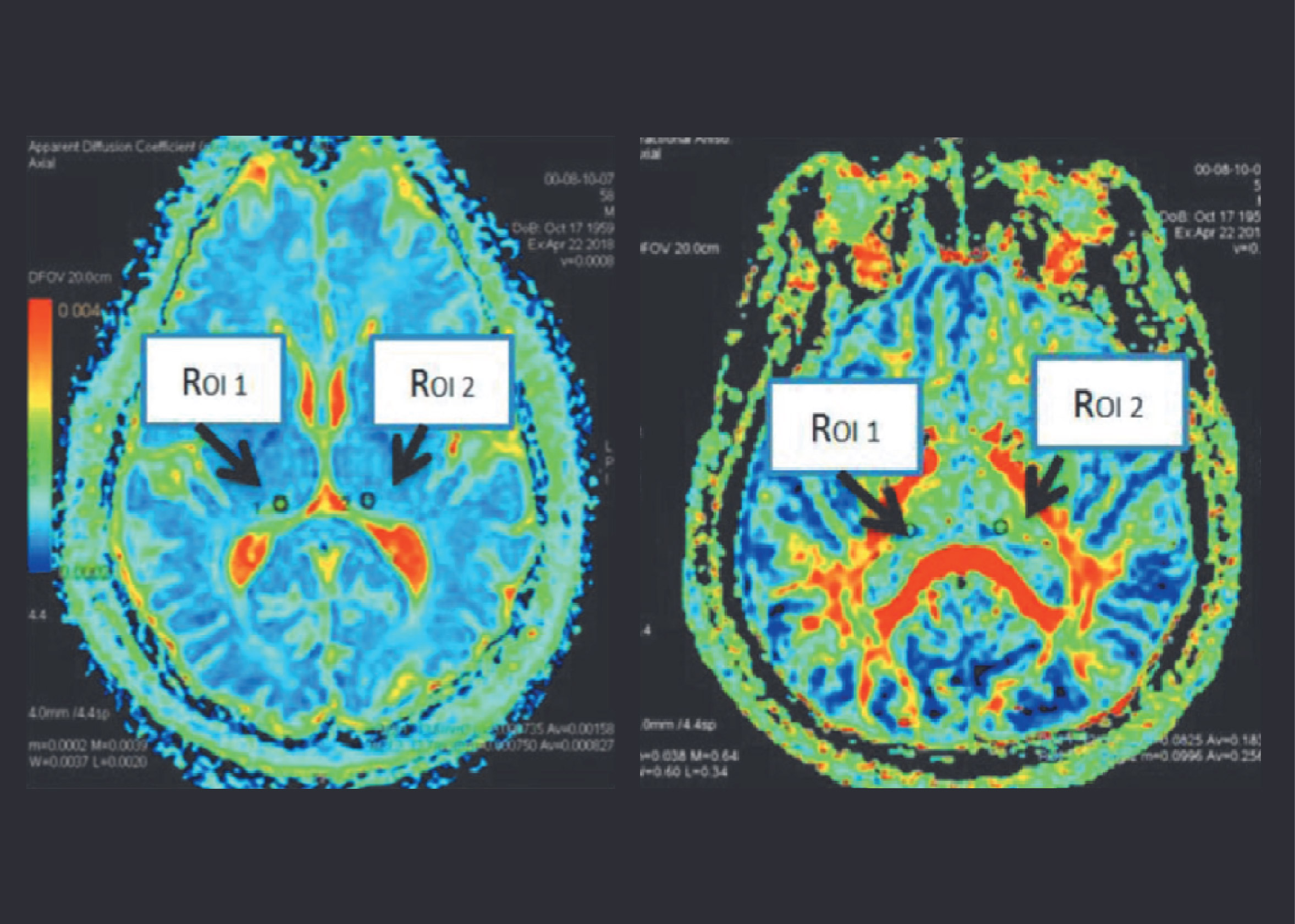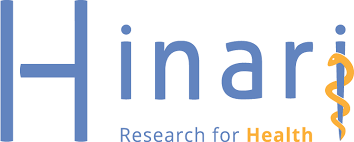ANALYSIS OF FRACTIONAL ANISOTROPY (FA) VALUES AND APPARENT DIFFUSION COEFFICIENT (ADC) VALUES IN ISCHEMIC STROKE DISEASES OF MRI GE 3 TESLA

Downloads
Background: Diffusion Weighted Imaging and Diffusion Tensor Imaging is an advanced technique in MRI that shows the diffusion in brain of ischemic stroke disease. Diffusion Weighted Imaging (DWI) shows the lesions without gadolinium contrast agent and produce Apparent Diffusion Coefficient values. Whereas, Diffusion Tensor Imaging (DTI) shows connectivity's of central nervous system that cannot be seen by using conventional MRI. Diffusion Tensor Imaging produces Fractional Anisotropy values. Purpose:This study has aim to analyze the Apparent Diffusion Coefficient values and Fractional Anisotropy values in Stroke Ischemic disease. Method: Total samples used are 14 samples, consist of 7 (50%) man and 7 (50%) woman with ischemic stroke disease. Each sample deals by Diffusion Weighted Imaging and Diffusion Tensor Imaging sequences. The Region of Interest (ROI) is placed in ischemic stroke lesions and contra lateral side of lesions. Result: The result shows that 9 samples of brain tissue lesions located in the right side and 5 samples in the left side. Right lesions have the average ADC stroke: 0.001748; normal ADC: 0.000954; FA stroke: 0.144522; and normal FA: 0.426111. While, left lesions have the average ADC strokes 0.000979; normal ADC: 0.000835; FA stroke: 0.2556; and normal FA 0.4324. Conclusion: So, the conclusion of this study is Apparent Diffusion Coefficient (ADC) values in case of ischemic stroke can decreases or increases depend on the age of stroke. While, the Fractional Anisotropy (FA) values will decrease without being affected by age of stroke.
KA
Alegiani, A.C., Simon, M., Hanna, B., Sussanne, S., Christian, G., Jens, F., Laurent, D., Marc, H., Yves, B., Norbert., Gotz, T. 2017. Comprehensive analysis of early fractional anisotropy changes in acute ischemic stroke.Pp.2-11.
Alexander, A.L., Lee, J.E., Lazar, M., Field, A.S. 2007. Diffusion Tensor Imaging of the Brain. Neurotherapeutics. Vol 4(1). Pp.316-29.
Baradaran, H., Mtui, E., Richardson, J.E., Delgado, D., Dunning, A., Marshall, R.S., Sanelli, P.C., Gupta A. 2016. White Matter Diffusion Abnormalities in Carotid Artery Disease: A Systematic Review and Meta-Analysis. Neuroimaging. Pp.481-88.
Koike, N., Akihiro, C., Katsuhiro., Kazuhiko, S., Shigeyuki N., Yuji, O., Nobuhiro, O. 2009. Role of diffusion-weighted magnetic resonance imaging in the differential diagnosis of focal hepatic lesions. Word Journal of Gastroentrology. Pp.5805-02.
Lee, C.E.C., Danielian, L.E. 2009. Normal Regional Fractional anisotropy and apparent diffusion coefficient of the brain measured on a # T MR scanner. Diagnostic Neuroradiology. Pp.3-9.
Shen, J.-M., Xia, XW., Kang, WG., Yuan, JJ., Sheng, L. 2011. The Use of MRI apparent diffusion coefficient (ADC) in monitoring the development of brain infarction. BMC Medical Imaging.Pp.1471-2342
Tammie, L., Benzinger, S., McKinstry III, R.C., Chen, C.I., Priatna, A. 2007. Clinical Applications of Diffusion Tensor Imaging, MAGNETOM Flash. 3/2007 https://www.healthcare.siemens.com/magnetic-resonance-imaging/magnetom-world/clinical-corner/clinical-talks/6th-world-summit-presentations-benzinger.html. Diakses: 20 Februari 2018.
Vilanova, A., Zhang, S., Kindlmann, G., Laidlaw, D. 2006. An Introduction to Visualization of Diffusion Tensor Imaging and Its Applications. Springer Verlag. Pp. 121-153.
Yueniwati, Y. 2016. Pencitraan pada stroke. Malang: Universitas Brawijaya Press.
Copyright (c) 2019 Journal Of Vocational Health Studies

This work is licensed under a Creative Commons Attribution-NonCommercial-ShareAlike 4.0 International License.
- The authors agree to transfer the transfer copyright of the article to the Journal of Vocational Health Studies (JVHS) effective if and when the paper is accepted for publication.
- Legal formal aspect of journal publication accessibility refers to Creative Commons Attribution-NonCommercial-ShareAlike (CC BY-NC-SA), implies that publication can be used for non-commercial purposes in its original form.
- Every publications (printed/electronic) are open access for educational purposes, research, and library. Other that the aims mentioned above, editorial board is not responsible for copyright violation.
Journal of Vocational Health Studies is licensed under a Creative Commons Attribution-NonCommercial-ShareAlike 4.0 International License














































